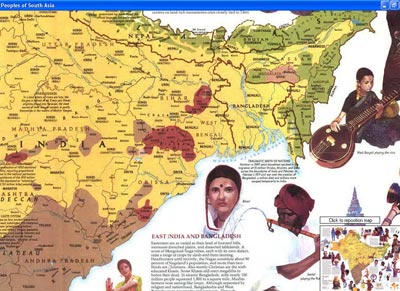|
|
HOME >>
Asia
ASIAN PHARMA INDUSTRY
 The
pharmaceutical industry has
emerged as a major sector of the world economy only during the second half
of the 20th Century. Today, it is a 350 billion dollar industry spread
across mainly in three continents namely North America, Europe and parts of
Asia. Almost 47 percent of the world pharmaceutical market is controlled by
North America, followed by Europe with a market share of 24 percent. Japan
alone has a market share of 16 percent in Asia. Rest of the pharmaceutical
market is in South East Asia,
Latin America, Africa and
Australia. Growth of pharmaceutical industry has taken place in South East
Asia only during the last 15 years. India, China and South Korea have now
been recognised as the leading players in South East Asian region producing
and exporting a large number of bulk drugs and some quantum of dosage forms
to the developed world. India emerged as key supplier of several bulk drugs
to the US and European markets during the second half of eighties. China
entered the world pharmaceutical markets as a major supplier of bulk drugs
in the nineties with much lower prices and in direct competition with India.
Today, it is one of the major suppliers of bulk drugs to the formulation
producers worldwide. Chinese bulk drugs are also being accepted as quality
APIs. Countries like Singapore, Malaysia, Indonesia, Thailand, Taiwan and
Hong Kong are making serious efforts to build up strong domestic
pharmaceutical bases of late although currently MNCs dominate these markets. The
pharmaceutical industry has
emerged as a major sector of the world economy only during the second half
of the 20th Century. Today, it is a 350 billion dollar industry spread
across mainly in three continents namely North America, Europe and parts of
Asia. Almost 47 percent of the world pharmaceutical market is controlled by
North America, followed by Europe with a market share of 24 percent. Japan
alone has a market share of 16 percent in Asia. Rest of the pharmaceutical
market is in South East Asia,
Latin America, Africa and
Australia. Growth of pharmaceutical industry has taken place in South East
Asia only during the last 15 years. India, China and South Korea have now
been recognised as the leading players in South East Asian region producing
and exporting a large number of bulk drugs and some quantum of dosage forms
to the developed world. India emerged as key supplier of several bulk drugs
to the US and European markets during the second half of eighties. China
entered the world pharmaceutical markets as a major supplier of bulk drugs
in the nineties with much lower prices and in direct competition with India.
Today, it is one of the major suppliers of bulk drugs to the formulation
producers worldwide. Chinese bulk drugs are also being accepted as quality
APIs. Countries like Singapore, Malaysia, Indonesia, Thailand, Taiwan and
Hong Kong are making serious efforts to build up strong domestic
pharmaceutical bases of late although currently MNCs dominate these markets.
An important difference in the south East Asian countries unlike in India is
the relatively higher
standards of manufacturing
practices followed by the pharma companies. India, on other hand, has much
larger number of pharmaceutical companies but a majority of them with poor
manufacturing standards. Hardly 200 out of a total of 20,000 units have any
acceptable manufacturing standards in India. With mandatory implementation
of GMP by December, 2003 the face of Indian pharmaceutical industry will
also be changing with vast number of small operators will be closing shops
for good. An important incentive for the pharma companies in South East
Asian countries is the exploding demand for generics in the US and European
markets in the coming years. With increasing emphasis on cut in healthcare
costs in these developed markets, governments are keen to use more of
generics instead of branded products. It is estimated that almost 40 percent
of annual consumption of medicines in the US and Europe is going to be
generics from now onwards. Japan, the third biggest
pharmaceutical market, is also
looking at generics as an ideal option. For a growing pharmaceutical
industry in South East Asia, the spurt in demand for generics should prove
to be a right opportunity to cash on. The decision of leading pharmaceutical
manufacturing countries of Asia to form a federation of Asian pharmaceutical
trading association last December will be the first serious step to build
Asia as a powerful manufacturing base on par with North America and Europe.
New Added Products:
Phenobarbital sodium [57-30-7],Acenocoumarol
[152-72-7],Esomeprazole
Magnesium,Famotidine,Ibuprofen,Lacidipine,Levetiracetam,Losartan
Potassium,
Montelukast Sodium,Naproxen,Norfloxacin,Olmesartan,Omeprazole
Sodium,
Pantoprazole,Quetiapine
Fumarate,TrandolaprilZolmitriptan
New Product :
Caffeine
 [58-08-2] [58-08-2]

 |


